|
Having now had this lens for three years now (as of 2013) I’ve decided to do an update to my original review and give a definitive opinion on how this lens has served me during this time.
|
|
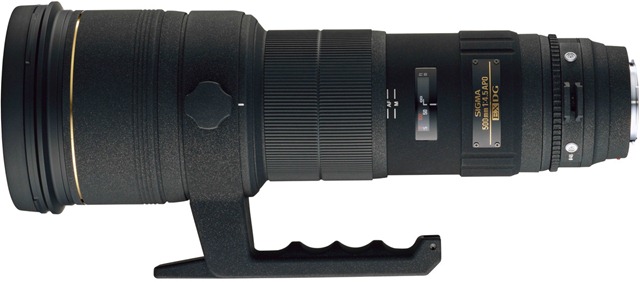 |
|
|
I’ve read a number of reviews on this lens and opinions vary and most are very positive, though it does seem to reflect the notion that Sigma lenses can vary in quality depending on the individual lens, so I can only give my view on the one I obtained. Prior to getting this I was using the Canon 400 f5.6 for most of my wildlife photography and it is recognised as one of Canons sharpest and fastest so I had this as a means of measurement in quality. I can’t make comparisons two either Nikons or Canons equivalents having never used them, but I’m pretty sure both will be superior in every way except in weight and price.
SharpnessTo start things off I did a side by side comparison with the Canon. I don’t normally bother with ‘pixel peeping’, preferring to see real, out in the field image quality. For me if it looks good on the screen and on print, that’s good enough for me. However for the sake of this review I took some ‘controlled’ images. All were using a Canon 5D, on a tripod with mirror lock up to avoid any camera shake. There has also been no sharpening of the images and I moved the Canon lens closer to the test chart to give the same size image. The results surprised me to be honest. The first was shot at f4.5 of which there is no Canon equivalent as it starts at f5.6 but it does show what wide open looks like. The surprise was that side by side, the Canon looks better than I expected wide open than the Sigma. The reason for the surprise is that in practice I haven’t noticed this. Having used the Canon for nearly three years prior to the Sigma, I noticed no obvious difference in image quality or sharpness, which just reinforces my opinion of doing any pixel peeping types of tests. I haven’t bothered showing tests beyond f6.3 as there was little difference between them and to be honest, I rarely have opportunity (or need) to stop down that far. |
Sigma 500mm f4.5 |
Canon 400mm f5.6 |
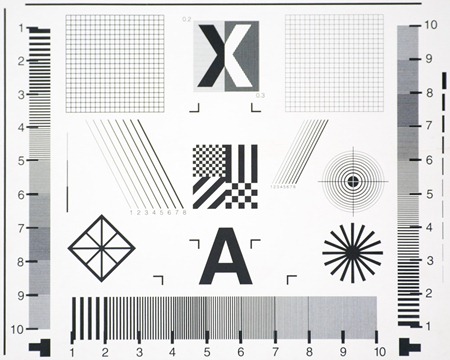 |
|
f4.5 |
|
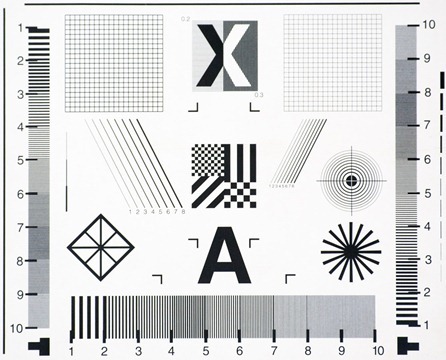 |
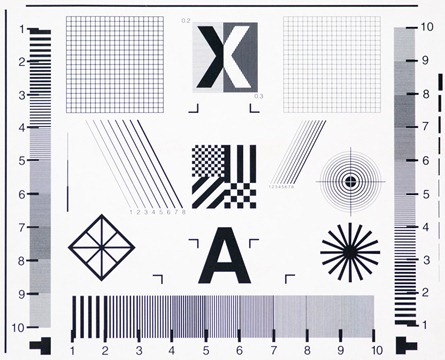 |
|
f5.6
|
f5.6
|
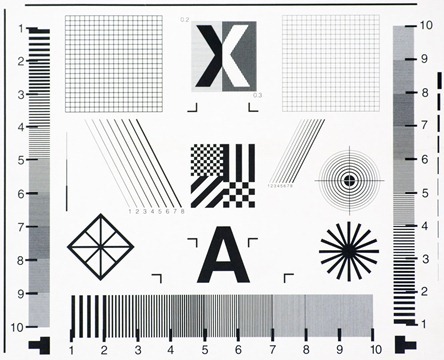 |
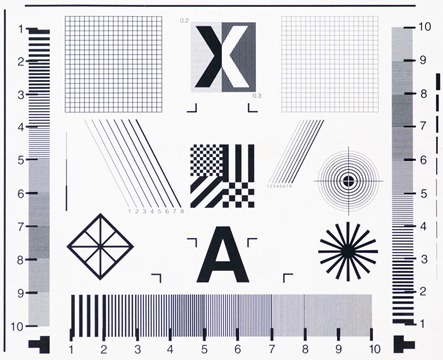 |
|
f6.3
|
f6.3
|
1.4x Teleconverter (Kenko pro 300)I have no hesitation in using a converter with the Sigma lens and in fact use it around 60-70% of the time. It does slow down the speed of focusing, though for me it is still fast enough for most of what I photograph. I’ve used the lens/converter combination with a 30D and 1D Mk III and clearly the ID series is faster. I have had two of these converters – an earlier one and the newest version. For some reason it felt the first one was slightly better in its images but unfortunately I lost it so can’t do a comparison. Despite this the quality to me, is very good. Strangely enough, I’ve twice done a ‘pixel peeping’ test under controlled conditions and both times felt that the quality wide open, was better with the converter on than off! This can’t be correct but shows how little difference it makes. |
Sigma 500mm f4.5 |
Canon 400mm f5.6 |
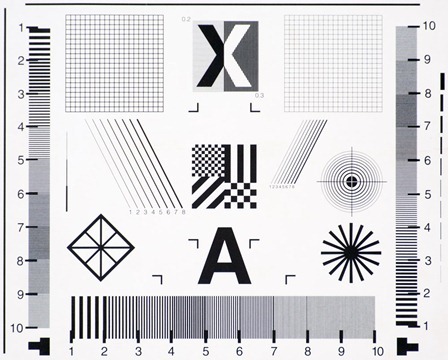 |
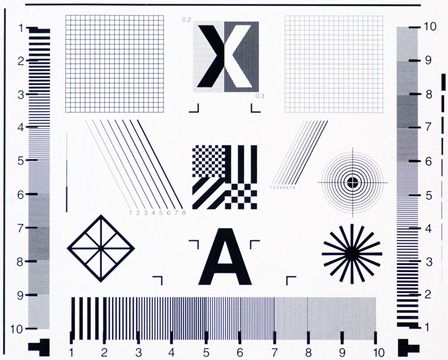 |
|
f6.3
|
f8
|
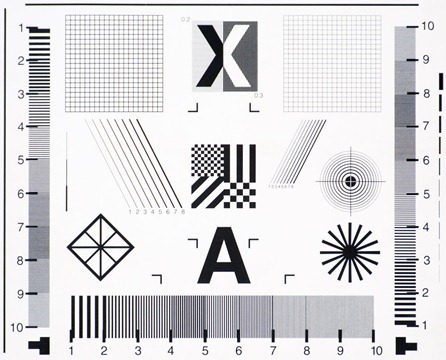 |
 |
|
f7.1
|
f9
|

Wide open - 500mm at f4.5 |
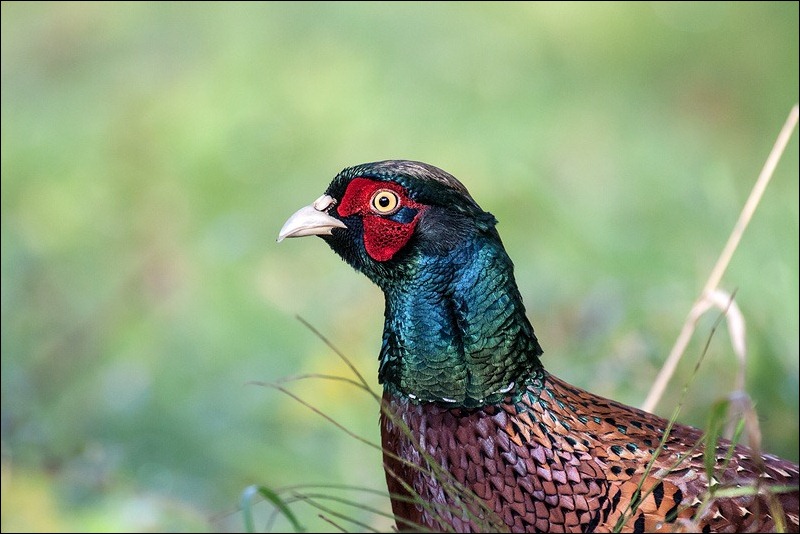
Wide open - with converter (700mm) at f6.3 |
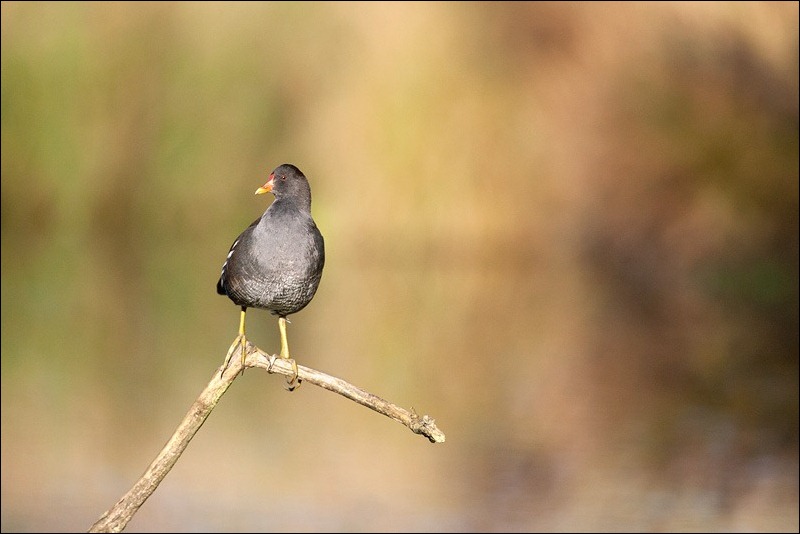
Wide open - 500mm at f4.5 |
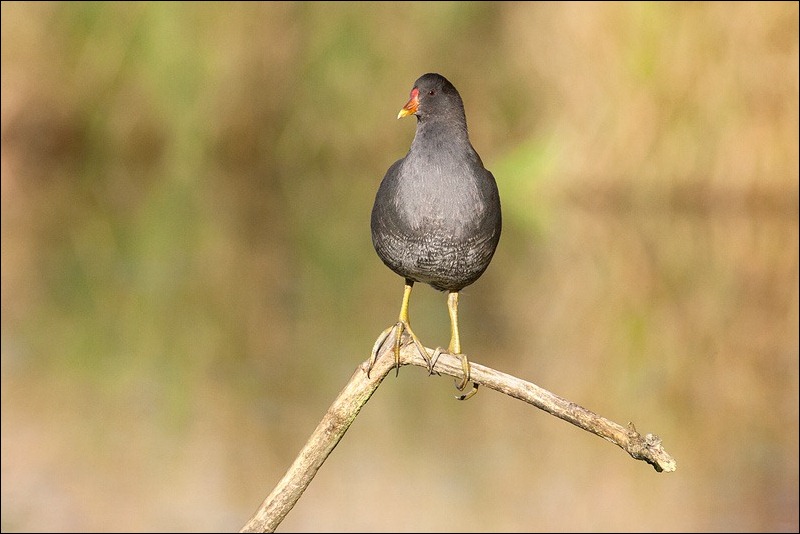
Wide open - with converter (700mm) at f6.3 |
Depth of FieldUsing the lens wide open at f4.5 (f6.3 with converter) means a very narrow depth of field which means out of focus shots if the focusing isn’t exact. As the best wildlife shots tend to require the eyes of the animal to be the key focus points it requires good focusing skills particularly with small birds which tend to constantly be moving around. The first shot below of the Siskin show how narrow the depth of field is. Only the head is in focus, with the legs, tail and wing tip completely blurred. The branch which the Long Tailed Tit is perched on, in the second image, shows not even a couple of centimetres in focus. |
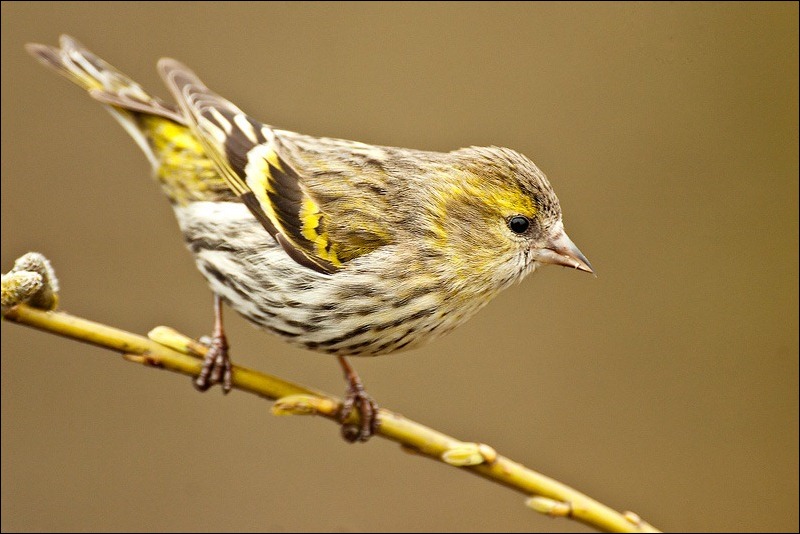
500mm at f4.5 |

With converter (700mm) at f6.3 |
BokehApart from conditions, the other reason I use this lens wide open is way the background looks. Throwing it out of focus can help make the image stand out and this lens seems to do an effective job of making the background look pretty good and smooth. The only problem I’ve had is any highlights especially when photographing waders in bright sunlight where it is creating bright spots. I’ve no experience how other large, fast lenses handle this so maybe this is unavoidable. The background (and foreground) on the Sanderling has been nicely thrown out of focus as have white pebbles without causing too much of a glare. The background in the Woodpecker image shows how, given ideal conditions, it can really help make a picture. In this case it was the suns reflection on distance foliage. |
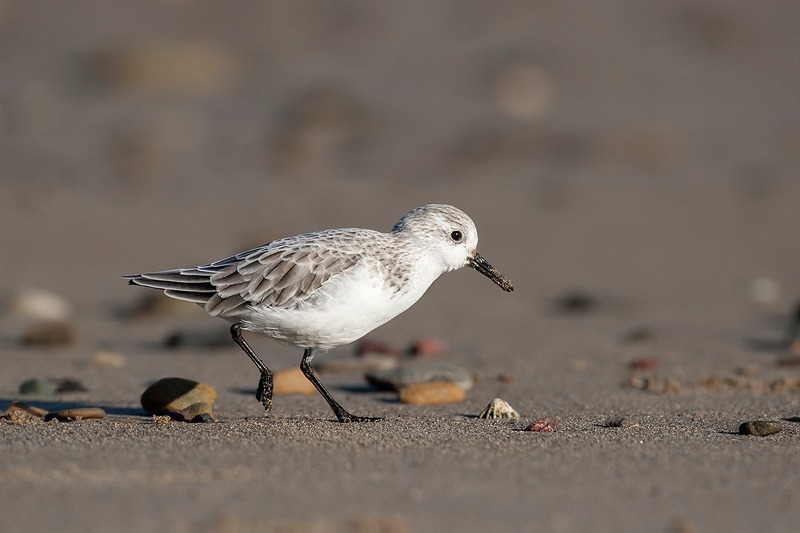
500mm at f4.5 |

With converter (700mm) at f6.3 |
SpeedFor general wildlife photography, I’ve found the speed to be fine – not brilliant – but good enough for my needs. Sticking a converter on it slows it down as does a none professional body. Photographing birds in flight is a good test and this is where it does feel slower than my Canon 400mm f5.6 but then that lens is known for its birds in flight ability. How well it performs will depend on your camera, technique and conditions. I’ve managed to photograph owls at dusk, with a converter on, but only after practice and still plenty of images were thrown away. The images below were under optimal conditions i.e., good light and an uncluttered background and where shot with a Canon 1D Mk III. |
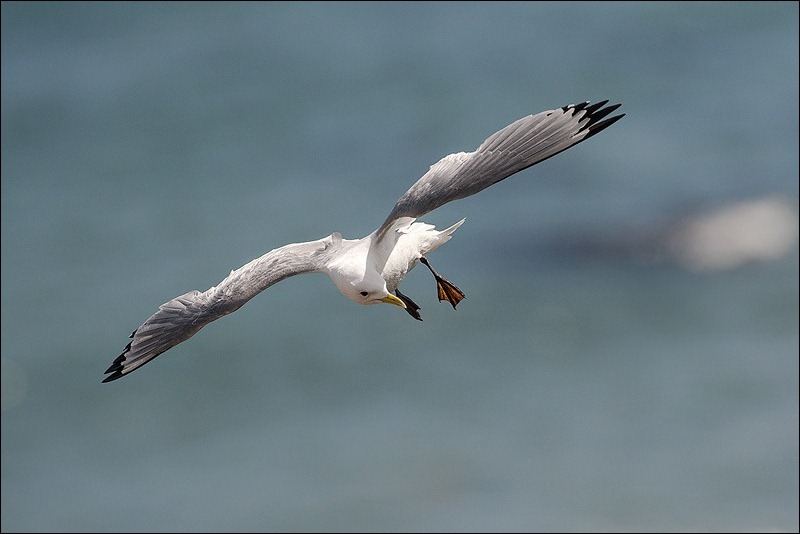
500mm at f7.1 |
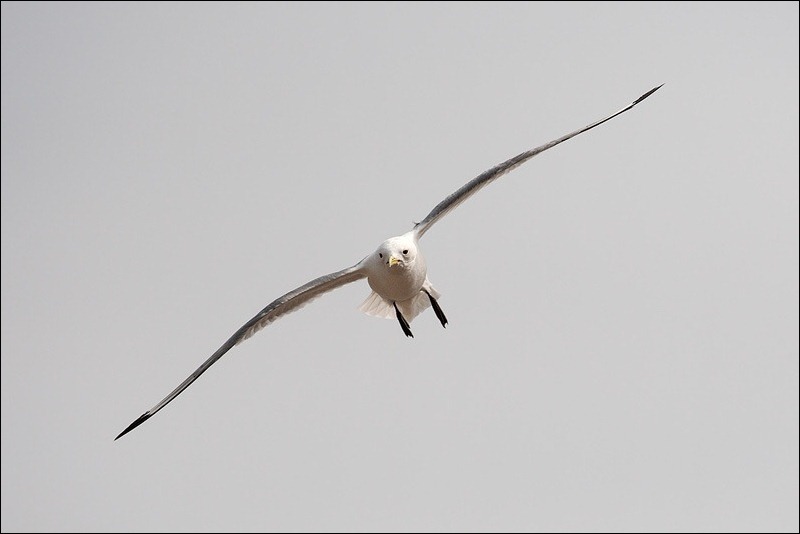
500mm at f6.3 |

500mm at f6.3 |
General useWhen I first got the Sigma it felt huge and heavy having previously been used to the much lighter and smaller Canon 400mm. However, it was surprisingly how quick I became used to using it. Firstly, not having image stabilising was not a big issue for me as the only lens I have ever had with it is the Canon 300mm f4. I admit it would be very nice to have it but then the lens would have been bigger and then probably out of my price range. Ironically, its not having IS than makes it the lens that it is. Apart from the test shots in this review, I’ve never used it on a tripod, preferring instead to be mobile and either using a mono pod or finding alternative means of resting it either a wall or fence or, as I often do, use my camera bag or, with the camera bag on my back and used as a kind of back rest, I hold the lens between my knees as a kind of tripod. I think holding a camera and lens still has become a lost technique as people have come to rely on IS. Of course I still loose a higher percentage of images to camera shake that I might not have otherwise had I had IS on it. The image below was shot using my camera bag as support and at 1/400 second. By using my bag, it meant carrying around less weight and had the added advantage of shooting from a low angle. |
 |
|
As far as the weight is concerned, I often carry the lens around for the day, thanks to Tamrac Expedition 7x, which nicely spreads the weight evenly on my back. When not in the pack I carry it by its large handle. There are times when I’ve photographed birds in flight, hand held, and have managed to do so for about 30 minutes or so before starting to feel the effects. As mentioned, the Tamerac pack is an ideal combination as it takes the lens attached to the camera and if needed, the converter too. The robustness of the lens seems to be good. I’ve dropped it a couple of times from a short height once landing on the lens hood which took the full force and dented it and had to be reshaped. Black lenses and Sigmas in particular, due to their finish have the complaint of getting marked easily. I have a cover permanently on my lens so haven’t really come across this issue. This lens is not weather sealed but I have been out in heavy snow fall and drizzle and have never felt there would be a problem though I’m sure having the covers on the lens helps a bit to protect it from the elements. Negatives?My lens was second hand when I got it and I’ve had it for a number of year now. At first when using it, I would walk around with it attached to my monopod to the lenses foot. However I’ve had to stop this as this wore away its threads, thankfully it comes with a number of these so I can still attach it to a monopod or tripod etc, but I’m sure this would not have been such as issue on a Canon lens, bearing in mind these are heavier. I will eventually want to have this repaired though I’m guessing as the whole foot will need to be replaced, this will not be cheap. Shooting into low light can cause a lack of contrast even with the lens hood on so needs care, otherwise contrast is good. One other picky gripe is the cloth lens cover. This is fine when storing the lens but it’s no good when the lens good is on and you are walking around with it. The lens hood is quite deep so I haven’t felt concerned about the front element becoming scratched however, recently in windy wet or snowy conditions, rain or snow drops can get onto the front requiring a clean. I’ve only recently found somewhere that makes a walk around cap for the front of this lens, prior to this I used a DVD container top which did the job. ConclusionMoving up from my Canon 400 to this has made a big difference to my photography, as big a difference as getting the 400 originally. Before getting this I did thing about getting one of the 500 zooms – such as the Sigma's or the Tamron. But these I believe do not truly reach 500mm are also nearly two stops slower (although the two newer Sigma's have IS). It’s amazing how much a difference having those extra stops, even from my 400, can make. The Canon 500mm was well out of my price range (and has nearly doubled in price since!), so a second hand bargain as it was, has was turned out to be one of the best photographic buys I’ve made. Even if I was to have the kind of money to buy one of the top Canon primes, I would still hold onto this lens because it is light and portable and yet manages quality images. |

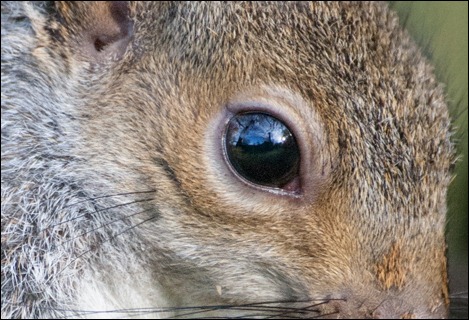





Thanks for review.
ReplyDeleteI agree with your assessment. I have been using the Sigma 500 F4.5 for about 6 months now shooting small birds in low light and water birds in good light. I do use a monopod 100% of the time and get excellent results. I find the lens very sharp and easy to handle (on the monopod). Your birdshots are very good. John
ReplyDeleteAppreciate your comments. Yes, it's not bad when you consider it's half the price of the Canon equivalent and if you can find a used copy, the price many enthusiasts will end up paying for a new camera body.
ReplyDeleteThank you for your review of this lens. I happily found a used Sigma 500mm/4.5 for my Canon 5DIII and can't wait to have it on my camera. I am a previous Sony shooter and I have to say, I loved the Sigma 300mm/2.8, it changed my wildlife photographs and at the time, I almost wished I would have purchased the Sigma 500mm instead, but it all worked out as I sold both Sony cameras and the three Sigma Lenses. I plan on having the 500mm Sigma soon and this review was very helpful in my decision to go ahead and buy this beautiful lens.
ReplyDeleteGlad the review helped you in your decision. Reading others reviews helped me make my decision in buying the lens, which is why I did this review. With the focusing of the 5d Mk III and its image quality, you'll have some combination. I've used it on my 5d original, and on a full frame camera the depth of field will be very shallow wide open so if you use it at f4.5, don't be put off by what seems to be out of focus shots, though using a 2.8 lens you probably have already experienced that. Hope you have a great time with it.
ReplyDeleteI have this lens and love it the only problem that I have I can not use a TC with it on my D7100 and even tried it on D800 and still would not work have used sigma 1.4 and Kenko 1.4
ReplyDeleteThat's strange. I can use Kenko 1.4x with my Sigma 500mm f4.5
ReplyDeleteThank You for the comment on Sigma 500/4,5. I am Pentax user and looking for Sigma 500/4,5 which I hope wil work perfect with Pentax TC 1,4 500 mm -> 700 mm
ReplyDeleteHi i need help with this,
ReplyDeleteI am considering buying one of these lenses and something is confusing me..
I see that some of the have "Hyper-sonic Motor" written on them... and this one you have reviewed does not,
So does that mean it doesn't have it? and is this the newer or older version?
I believe Sigma made at least three versions of the 500mm f4.5 going back a number of years. The earliest version looks completely different, however the one I have and the latest look identical with the last one being updated and more optimised for digital. Both my version and the latest have the Hyper sonic Motor (HSM). Actually, the image of the lens you see is in fact the latest version and although it doesn't show HSM, it does have it. Mine does say HSM on it and I think that's how to tell the differences between the two variations. Apart from that, performance wise, I think it would be hard to tell the differences in practical terms.
ReplyDeleteIf you're buying one brand new then it will be the latest. Second hand might be either. Hope that helps.
i own a the sigma 500mm f4.5 paired with a canon 7D markii and a 6D and i still have focusing issues, with and without my converter, to perfectly fine tune focus i feel that i have to microadjust the lens according to shooting distances to have best chances, image quality is amazing, when i nail it i really nail it!
ReplyDeleteHay,
ReplyDeleteI am also going to buy this lens, for mij canon 7d mii , but i have a question does the af work in a 6 d and 1,4 kenko? Its above 5.6?
That's an interesting question. The short answer is yes. However, I never thought about this before but prior to my using this on my 6D I used it on my Canon 1D bodies which can autofocus on lenses above f4 - this being f4.5. Previous to that I had a 30D and so had to 'tape' the pins of the converter. However, between getting my first 1D body and my 6D I lost the previous Kenko converter and replaced it with the Kenko 300 Pro. I don't believe there is a great deal of difference between them and a quick bit of research suggests there is still that focus limitation. However, it definitely autofocuses using the Kenko Pro 300, the Sigma Lens and the 6D. I've been using this combination for nearly a year.
ReplyDeleteHi
ReplyDeleteThanks Franks for sharing this article.it certainly helped me to decide what to do when the choices must be based on the cost first.
For years i used the nikon 300mm f/4 ed if af-s lens.it provided high quality pics and it was about time to step up a class,but as we know the prices are not linear to the focal lenght....
Anyway i bought this 500mm sigma, mint condition second hand and begun to get use to,since i was not use to stabilizer it was not a drama to practice on BIF.
The focus speed is quite the same and fast !!!after fine focus tuning to -6 the lens opened entire options for me,it is very sharp,color,boukeh - excellent,motor is quiet and if you nail focus on the subject in motion you will come out with an winning result !!! I wonder if a 500mm nikon f/4 and 5K$ more will produce a double better result.
I don't use the lens at f/4.5 wide open nor at 5.6 since the depth of field is narrow anyway and f/6.3 to f/8 produce the best result.
Refering to t/c option - I'd rather to crop the D7100 sensor then lose sharpe images or slow focus.i used a 1.4 t/c on my 300mm f/4 and got rid of it very fast....
Weight is different of course.I made a semi gun handle taken from a handhold disk grinder.it helps very much to hold vertically then support the lens at the collar or else.(bolt replaced to 1/4") by that you can work fast on tracking.naturally you get tired quite soon and a been bag or a gimbal head will do (depends on how you work,from the car or a blind or camoflage net)
My lens does not have the pull/push manual/auto focus,i don't know why....it is a EX DG IF HSM APO.as you mentioned there is some differences in models, but i never neaded the manual option and it exists on the D7100 anyway,also if you put a camo cover on the lens (which prevent also over heating in the sun) you cannot function the push/pull focus switch.
From all to all i am very satisfied with the lens it cooperate with the nikon D7100 excellent.
Best regards!
Interesting comparison in experience you've had using it, from mine. I haven't had to fine tune the focusing on it, though I did go through the process just in case. It just did' need it.
DeleteI'm not sure which part of the world you live but where I am it is dull a lot of the time so I do use it wide open, I would say 80% of the time although it means focusing has to be spot on. I would prefer to also stop it down if for nothing else, the increased depth of field.
I understand what you mean about the converter. Most of the time I've had cameras of under 12MP and although I always try and get close to the subject rather than crop, it wasn't always possible and those cameras didn't allow for much 'chopping' of the image. With the 6D I have a bit more leeway.
Strange that you don't have a manual focus option. Something unique to Nikon cameras? I don't use the manual focus option though will manually 'fine tune' focus sometimes whilst switched to auto focus. Not sure if this is a damaging thing to do to the lens.
Good to hear another person happy with this much, unspoken lens.
With regard to the question asked on 26th September 2015 I too have one of the earlier versions of this lens and it has worked well on my Nikon F6 and then on my Nikon D700. I am thinking of upgrading my camera to the Nikon D810 and wonder if there will be much difference between the new Sigma 500 mm lens model which seems to be more optimised for digital compared to the older versions, and how well it will work on the D810, which I gather are 'fussier' with regard to optics.
ReplyDeleteOn Nikon D810, very sharp....very impreesive to me, see: https://m.youtube.com/watch?v=32trvVQSnh4
DeleteI've only used this lens on Canon cameras so wouldn't like to say for sure how it would work on Nikons. I don't notice any kind of performance loss using a non digital version but then I can't compare it to the digital one, only my other lenses. What I would say is that the D810 would be more likely to pick up any 'flaws' in lenses due to it's very high resolution sensor so the digital version of this lens is going to be of help. The highest resolution camera I have is the 6D which has a 20MP sensor and I've not noticed any issues with it. Hanan in his comments above is using it with the D7100 without any problems, so there's a good chance it would be fine.
ReplyDeleteHello Frank
ReplyDeleteI own a 6d and a Canon 7d mark ii and I was thinking of buying the Sigma 500 and your post is very helpful and you have helped me make up my mind. The Sigma seems a cracking lens and had it "Canon" on it, people wouldn´t be having this discussion. Besides, Canon´s standard 500 mm lens just a decade ago was also a 500mm f4.5 , and back then no one complained of this lens because it was the best at the time. The Sigma is an improvement over that lens and it still has its own niche, costs a third less than Canon´s 500mm f4 ii -which is an amazing lens- but the latter isn´t three times better than the Sigma.
I own the 400mm f5.6 and I love it. In the near future when I have money I would like to sell it to buy the Sigma 500. My question is: if you were able to keep both the 400mm f5.6 and the 500mm,the first mostly for birds, and the other for birds and for wildlife in general, would you do so?
500mm in a 1.6 cropped sensor body is 800 and I fear that this would limit my field of view too much when taking birds in flight (not stationery birds).
I´m mostly inclined to sell the 400mm f5.6 eventually, as in practice you don´t see wildlife photographers carrying 2 cameras with 2 big telephoto lenses, as the Sigma would be an upgrade, at the price of carrying a heavier lens. Moreover, I plan to travel to exotic places like Costa Rica, and a travel bag will normally only let me carry one big telephoto lens, owning 2 and traveling with them is just impractical.
What do you think?
Thanks for your opinion!
Hi Rafa, thanks for your comments
ReplyDeleteThe short answer would be yes, I would (did) keep both. However, if I could only keep one I would keep the Sigma. I also wouldn't carry two cameras with both lenses - it's just not practical - weight, storage and use.
However, you are right about the limited field of view with birds in flight. I regularly go to the Farne Islands which is a mass of flying birds. One year I took the Sigma and found myself struggling to see and follow them them in the viewfinder (in flight) and got much better images with the Canon 400mm. However I'm sure with practice, it becomes easier. The other thing is weight, hand holding the Sigma while photographing birds in flight is definately doable but after a while you start to feel it whereas I never have with the Canon. I don't often use my Gimbal/tripod combination as I prefer to travel light so use a monopod but this can make photographing birds in flight, especially if they are flying past or over, clumsy to do.
The old saying when photographing wildlife, particularly birds, that you never have enough reach, has been true for me. I've very rarely found myself being able to be too close to wildlife, particularly birds, in fact I probably use my converter for about 60-70% of the time and did so even when I used my 30D which had the 1.6 crop.
If anybody has any concerns with the quality and usability of this lens, don't. It's not perfect - compared to the Nikon/Canon 500s it doesn't have IS, it's not weather sealed and probably couldn't be bashed around as much as those, but as you say it is much cheaper especially if you can get a used one as I did and you can work around it's those limitations easily.
I think in your case it's going to be simply down to how light you want to travel and how close you can get to the subject. I'm guessing lighting won't be an issue in places like Costa Rica unless you're in dense forest. I rarely use my 400mm since getting the Sigma, it's become a specialist lens which shows how much I like the Sigma. Good luck with your choice.
How did you compare 500mm to a 400mm lens side by side with same size images? You must have cropped different ratio or you were shooting with 400mm lens at much shortter distance in order to get same size image of that taken from 500mm lens. So, you might have given false conclusion though.
ReplyDeleteI didn’t crop the image, just moved closer. Not sure how this therefore could have given a false conclusion as they were just static charts.
ReplyDeleteAs stated, this wasn’t about ‘pixel peeping’, nor was the whole post meant to be a direct comparison between the Sigma and Canon, I just did this as it was my previous lens that I used for wildlife and so my only basis of comparison. It was just about a real world use of the lens and using the charts I did out of curiosity and, as stated, was surprised that the Canon seemed sharper as in my real world use, I couldn’t see any differences.
Things are rarely black or white. A different lens of the same model and make may have given different results. This is just how it is for me and in my use.
I think you don't understand the issue here. Since you showed the test charts, then this is not matter of field testing any more. It is sort of "pixel peeping".
DeleteYou just cannot do that, which move closer to the target and use that image to compare the 500mm prime image at father distance. You cannot do this side by side compare though.
I give you an extreme case to illustrate this problem: Say I have a 85mm lens to shoot a target at 10 ft away, now I have this Sigma 500mm prime to shoot same target but I have to move far far away in order to get same size a image. Now by comparing both images, you will see the image taken by 85mm lens is far sharper!! You see what is your problem for your method. You basically give Canon 400mm lens an edge (~20% advantage) in this comparison you even not noticed.
There is no issue here and I think you’re still missing the point of the review. It’s not meant to be a Sigma 500mm 4.5 Vs Canon 400mm 5.6. The Canon was the only long telephoto I’d shot before so it was purely a brief comparison from what I had been used to shooting, to what I was now using. This was not meant to be a scientific, technically accurate comparison and I never suggested it was.
DeleteI also don’t follow your logic. You seem to be saying that the shorter the focal length, the sharper the lens is likely to be. The only likely impact this might have is atmospheric conditions and I’m pretty sure there wasn’t much of this inside my house. Whether I’m shooting with a 400mm lens or further away with a 500mm, it doesn’t matter. It will either be sharp or it won’t be so sharp. I don’t think that, because I’m shooting with a certain focal length at a certain distance, that my images will be less sharp – it doesn’t work that way.
You are looking into this far too much. This is the only time I’ve ever shot images of charts to look at ‘sharpness’ (and am starting to regret doing it this time). I’m not interested in this aspect of photography – I buy a lens, I try it and if my images simply look right, then I’m happy. Real life results are what I’m interested in, which is why the rest of the review had actual images taken with the Sigma 500mm only.
Again, just my experience and my own feelings which I wanted to pass on as I have in turn been helped by other people’s personal reviews on cameras and lenses.
I get his point and i get your either. Your pixel peeping was not bad as your point of view is to check the sharpness on each lens given an object taking the whole frame. Maybe some people would also have liked a 100% crop of each lens at the same distance to see if the reach and the quality of the lens would have been worth investing in this 500mm over the 400/5.6.
DeleteBy the way, those were 100% crops on the test chart ?
Thanks for the personal review Frank, I thoroughly enjoyed it. I have had difficulty deciding whether to get this lens or the Canon 100-400 ii, for birding. I did not think that the short end of the Canon would get much use as it would not be used as a general purpose lens as such. I liked the fact that I would have a little more reach and a little more aperture with the Sigma but had concerns about sharpness wide open which could degrade any aperture advantage on paper, if not good enough (especially considering the variation in reviews for this lens on the net). I enjoyed your review and when a very lightly used Sigma DG EX came up in the local classifieds at about 60% of the cost of the Canon, I took the plunge (in no little part spurred on by this review). I took it out on its maiden voyage yesterday and I am very happy with the results:) The DOF is very thin as you say and most of my missed shots wide open were related to this but looking though these images I could see what the focus had latched onto and there is was very sharp. The ones where I nailed the focus point were very sharp wide open and compared very favourably with the images taken stopped down to f8 albeit with slightly less contrast in certain situations. The background blur is very nice and smooth indeed even on the longer shots. I currently use a Canon 6D and plan to try it with the Kenko 1.4 TC soon. I noticed that you have posted some images from the Canon 80D and wondered what your experience was with this body as I am considering an APSC option for a little more reach. Regards, Philip Herbst
ReplyDeleteThanks for the complements. I've had this lens for quite a few years now and it still impresses me. Since the release of the new Sigma 500 f4, there's a lot of used copies of this older lens at bargain prices. As you say shooting wide open gives a very narrow depth of field and unless you get the focus right it feels like it could be the lens is at fault. Once you know this and take this into account the results wide open are great.
ReplyDeleteI got the 80D largely for its video option and a faster focusing option to my 6D. I forgot how much I've missed the 'reach' of the crop sensor. I've not managed to get out as much with it as I'd like to so don't have a complete idea of the combination. So far it works fine with the 80D, though, as I already knew, trying to touch focus using live view doesn't always work. Apparently some 3rd party lenses have this issue using this mode with the 80D. It does seem to be ok in video mode when touching the screen. I might do a review on the 80D as I couldn't find that much on it when I was looking to buy it, most of the reviews I could find concentrated on the video side, so it might be useful to anyone interested in the camera.
Hola frank merece la pena cambiar el sigma 150-600 sport por el Sigma 500mm F/4.5 APO DX DG HSM, cual es mejor. Gracias
ReplyDeletePersonalmente prefiero el f4 500mm, pero si ya tiene el deporte 150-600 puede no valer la pena la diferencia.
ReplyDelete